December 21, 2017
1. No Ban on Stolen Land
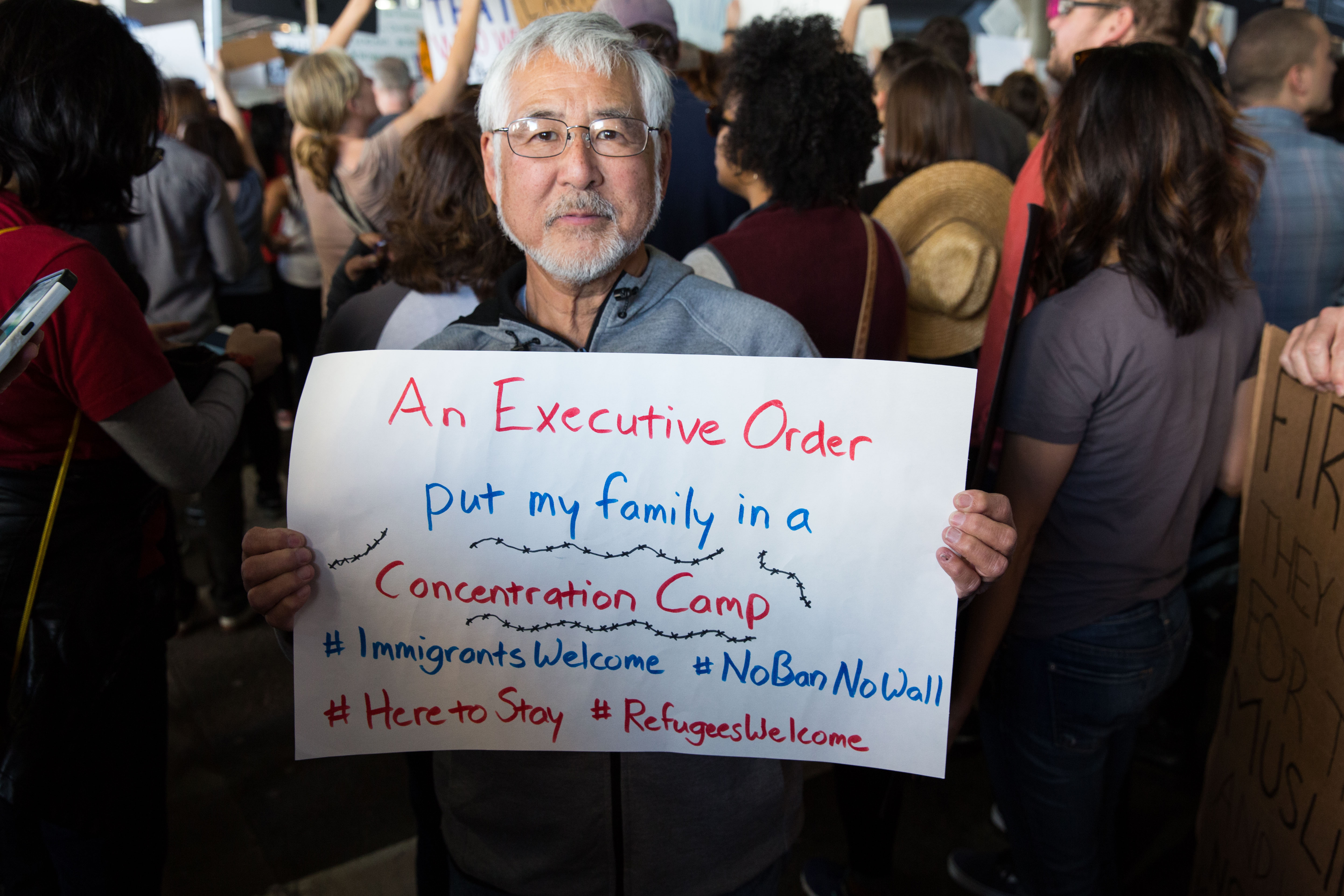
Just a few weeks into his presidency, Donald Trump signed Executive Order 13780 into law, immediately banning travelers and refugees from seven predominantly Muslim countries from the U.S. Activists mobilized and showed the hell up at airports across the country.
With the 75th Anniversary of EO 9066 on the horizon, Trump’s executive action struck a nerve for many Japanese Americans. In Los Angeles, Traci Ishigo and her Muslim American friend, Sahar Pirzada, organized hundreds of people protesting at LAX. Tani Ikeda captured Ishigo conspiring and inspiring the masses:
“When we hear the same language, the same tools of violence, we cannot pretend it is harmless. THIS is where it begins.”
As Densho Director Tom Ikeda put it in his written response: “Just as Japanese Americans were suspected of disloyalty on the basis of race in WWII, so too are Muslims being cast as potential ISIS co-conspirators now. While a Muslim travel ban is not the same as locking up citizens and resident aliens, the logic behind the two acts is dangerously similar.”
Japanese Americans across the country channeled their righteous anger into editorials, Facebook posts, poems, songs, and art that exposed Trump’s “national security” dog whistle for what it is: the same racist, xenophobic fear mongering that justified the incarceration of our own families during WWII. Together, their voices rose up in a #ModelMinorityMutiny chorus of “Never Again.”
Tsuya Yee, co-chair of the New York Day of Remembrance Committee (a seemingly tireless group that’s rallied to support everyone from American Muslims to the #NoDAPL resistance more times than anyone can count), put the response into historical perspective:
“With this order came swift resistance with thousands showing up to reject the ban — something that didn’t happen for our community,” she said in an interview with Densho. “It’s been inspiring to see people showing up and acting in new and collaborative ways.”
But the fight continues as the Muslim ban cycles through new language and new legal challenges in a lazy attempt to hide its cold, dead heart. The children of World War II civil liberties heroes Gordon Hirabayashi, Min Yasui, and Fred Korematsu filed an amicus brief opposing the order and continue to organize resistance. So stand up, show up, and get on board with their efforts to stop repeating history!
2. Oh the Places You’ll…Don’t Go There
Dr. Seuss is a lot like glitter — he gets everywhere and is pretty much impossible to get rid of. Despite his well-documented racism, the children’s author (real name: Theodor Seuss Geisel) has become a fixture in homes and classrooms across the country. But his role in stoking anti-Japanese hatred during WWII makes him an unwelcome — or, at best, complicated — figure for many Japanese Americans.
So when two woke kids learned they’d have to celebrate Dr. Seuss Week (how’d this mofo get a whole week anyway?!), they decided to take the opportunity to school their classmates. The kids, Rockett, 11, and Zoe, 10, made fliers and shared them with other students, hoping to educate them about Seuss’s racist cartoons. But their teachers wouldn’t have it. Rockett’s teacher confiscated the fliers and reported our junior activist to the principal. She also sent a curt email to his parents letting them know that school wasn’t the right place to share “his own thoughts and opinions” about Dr. Seuss.

The kids’ parents drafted a thoughtful response to the teacher, pointing out that Geisel’s racism was, “much like Hitler’s anti-Semitism, not an opinion, for Geisel’s hatred of Japanese is well documented, and is chronicled in American history books. Unfortunately our family has had a direct impact and has suffered directly from Geisel’s cartoons.”
We’d like to think the teachers came around and started teaching students about ALL of Seuss’s legacy, but the truth is we don’t know exactly how this story ends. What we do know is that this family taught us all a lesson in the ways of civic engagement and civil communication. In 2018, let’s use those lessons to set the new Dr. Seuss Museum straight.
3. Art Attack
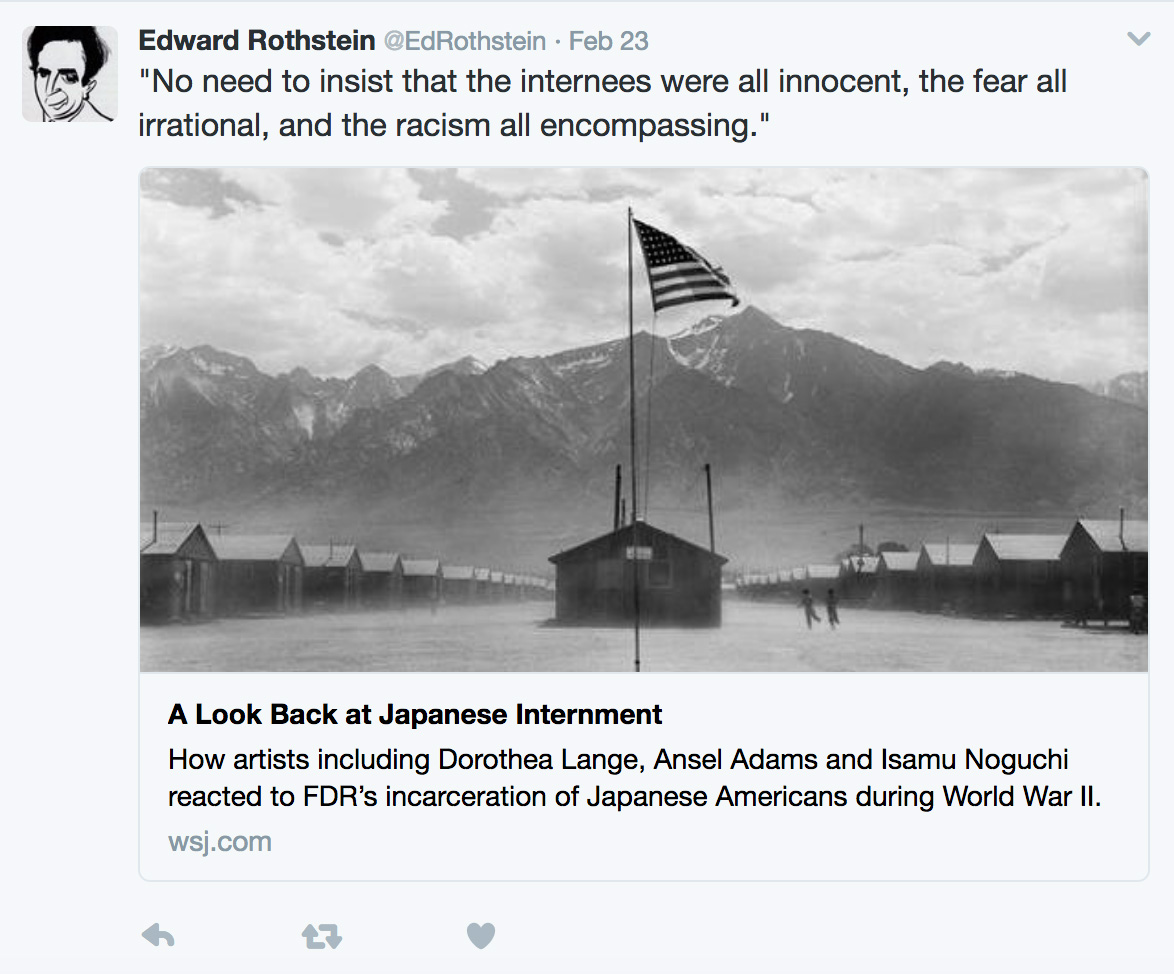
In a cringe-worthy attempt to top the LA Times’ incarceration apologists of 2016, Wall Street Journal writer Edward Rothstein, argued that viewers of two exhibits on Japanese American WWII incarceration should focus less on the actual injustice of Executive Order 9066 and more on the “good reasons for West Coast wariness” that led to it.
No. Just no.
Densho staffers Brian Niiya and Nina Wallace broke down the article’s half-truths, flawed logic, and not so subtle racism in a point-by-point rebuttal. Our Twitter fam did what they could to school Rothstein but he refused to back down (not surprising for a man who once criticized the newly-opened Heart Mountain Interpretive Center for its lack of “context”). But we see you Rothstein, and we won’t soon forget your callous cooptation of our history as a sensationalist hook for your mediocre art review.
4. Niʻihau Oh No
As a special present to AAPI folks during this year’s Asian American and Pacific Islander Heritage Month, Hollywood announced plans for a film based (very, very loosely) on the so-called “Niʻihau Incident” that took place immediately after the Pearl Harbor attack. The incident — which involved a Japanese American helping a downed Japanese pilot and ended in chaos and the deaths of both men — has long been used as “proof” of Japanese American disloyalty by missionaries of the Gospel of Incarceration Apologism. (Spoiler alert: it’s not!)
The film got dragged over the casting of the whitest white dude that ever whited to play the story’s Native Hawaiian hero, Benehakaka “Ben” Kanahele. Like, to the point that Zach McGowan’s brother took to Twitter to complain that AAPIs criticizing the film’s cultural cannibalism was hurting his fee-fees. White dudes, amiright?
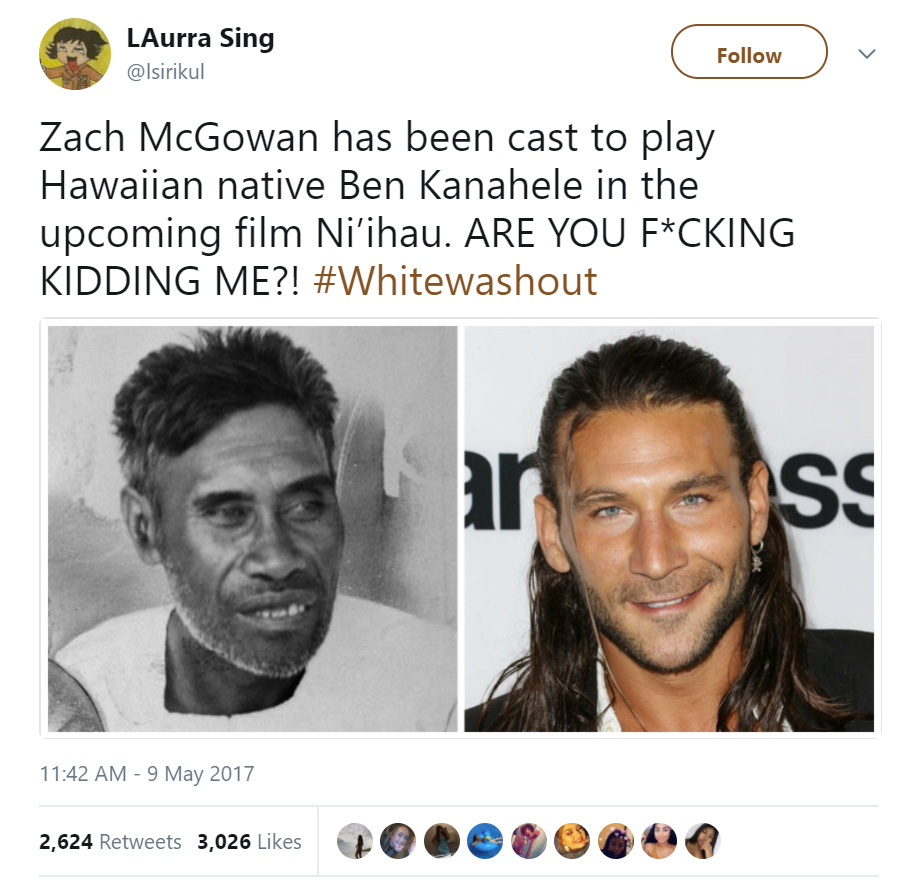
But publicity also repeated the false claim that the Niʻihau incident “led to President Franklin D. Roosevelt issuing Executive Order 9066” — and we weren’t here for it.
Brian Niiya took the film’s director to task with a laundry list of everything the film gets wrong. Meanwhile, actress/queen Tamlyn Tomita came out swinging, calling out “the absolute WTF casting” and fictionalized history: “How dare he be a proponent of Michelle Malkin’s sub-par research to lend his film a fart of credibility!”
What’s that we smell? Oh just the stench of white mediocrity and inevitable box office failure.
5. Don’t Fence Us In
When the Federal Aviation Administration announced plans to build an eight-foot high, three-mile long fence that would cut off access to the Tule Lake site, the Tule Lake Committee wasn’t about to have it. They spurred Japanese Americans and allies across the country into action, urging folks to submit letters to Modoc County and persuade them to opt for a solution that did not involve desecrating hallowed historical grounds.
As Dr. Karen Umemoto, a supporter whose mother had been incarcerated at Tule Lake, wrote:
“The preservation of Tule Lake as a historical site is part of America’s recognition that what was done to over 120,000 Americans of Japanese Ancestry was wrong. Maintaining the integrity of the site not only has deep symbolic meaning but affects visual, accessibility, and other tangible qualities.”
By the close of the comment period, some 5,000 people had written in to Modoc County. That’s some incredible organizing power! Stay tuned for developments on this story and some additional calls for support that are sure to come in the new year — follow the Stop the Fence at Tule Lake Facebook page.
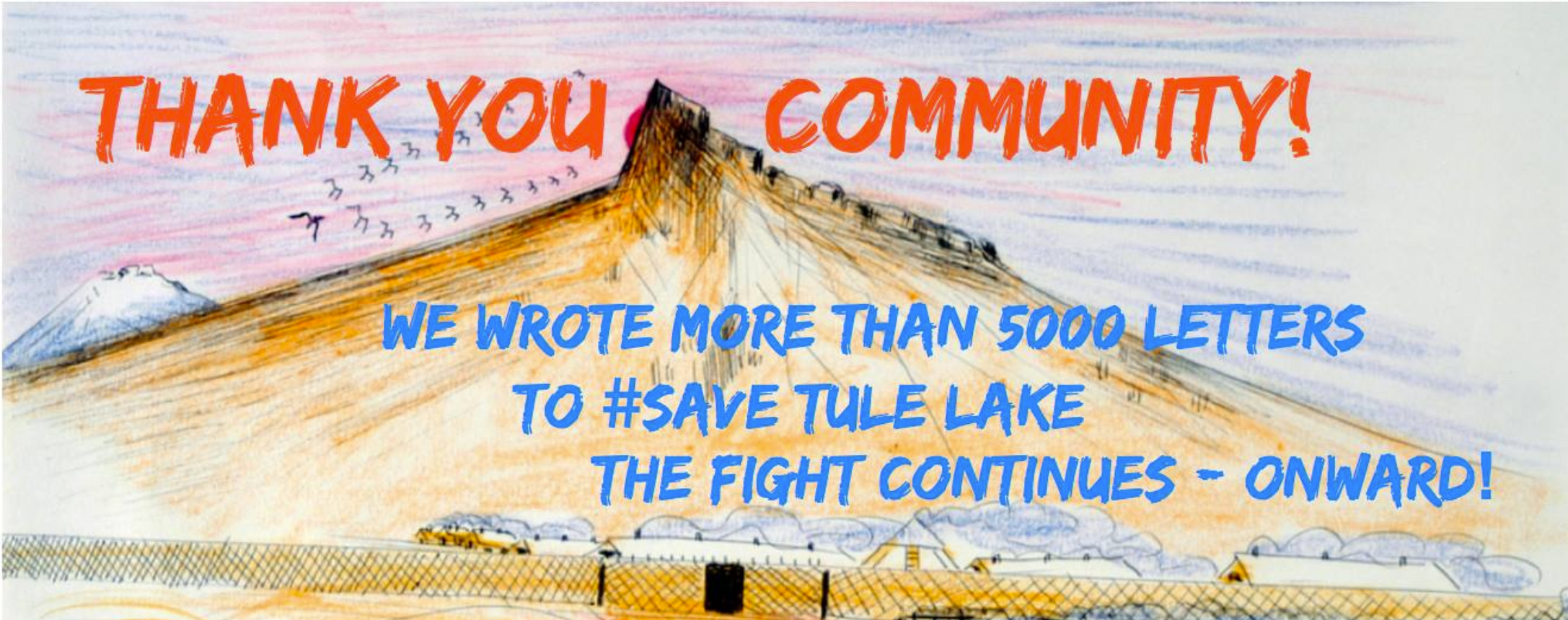
6. Wal-Mart “Wall Art”
As if the year needed any more drama, Wal-Mart decided to put its own spin on the lowlights of 2017. In November, the Japanese American History: NOT for Sale Facebook group shared news that the mega store was selling photographs of World War II incarceration, billing them as “the perfect wall art.” Group administrators wrote: “In a world where many things are for sale, we find the commercialization of these images particularly ignorant and insensitive.” Then they rallied their community to call Wal-Mart out. Within days, the images were no longer being sold on the site.
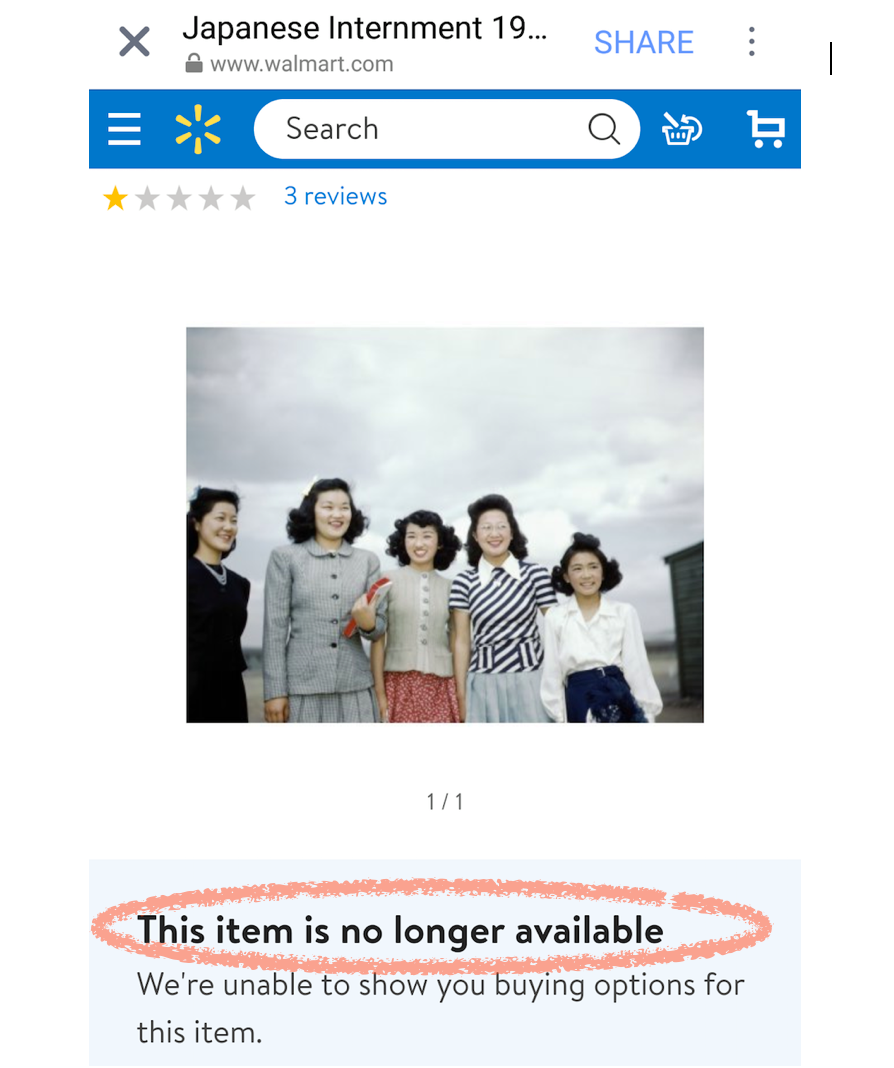
But it quickly became clear that Wal-Mart wasn’t the sole offender. Amazon and other retailers also sell images of WWII incarceration and are careless in how the market them. They’re technically able to do this because the images are in public domain, but have some respect, y’all.
Now, the Japanese American Citizens League has joined forces with 18 Million Rising to demand a response from Amazon and other retailers. Sign on to show your support.
7. The Sound of One Hand Clapping Back

Don’t get on Joseph Lachman’s bad side. Since the 2016 election, he’s been a hawk for spotting anti-Japanese racism, incarceration apologists, and others who’ve appropriated Japanese American history to support their racist agendas.
Remember the Colorado legislator who tried to justify Japanese American incarceration? Or the college prof who made the ludicrous claim that WWII incarceration wasn’t racist? In those cases, and so many others, Lachman punched out and published withering responses with astounding agility. He also started the Never Again Facebook page that melds his activist heart with his passion for Japanese American history. And he’s the new president of the Seattle chapter of the JACL. Follow his page and watch for more good things to come from this one!
8. The Revolution Will Be…So. Damn. Cute.
After our hearts finished melting at the sight of this chubby-cheeked cutie at the Women’s March, they filled up with hope. If this miniature social justice warrior can be bravely out there fighting the good fight, so can we. And it’s up to us to hold our leaders accountable because this kiddo’s generation will be inheriting whatever kind of mess we leave behind. So as we head into the new year, let this little one remind us of what’s at stake and inspire us to keep on going.
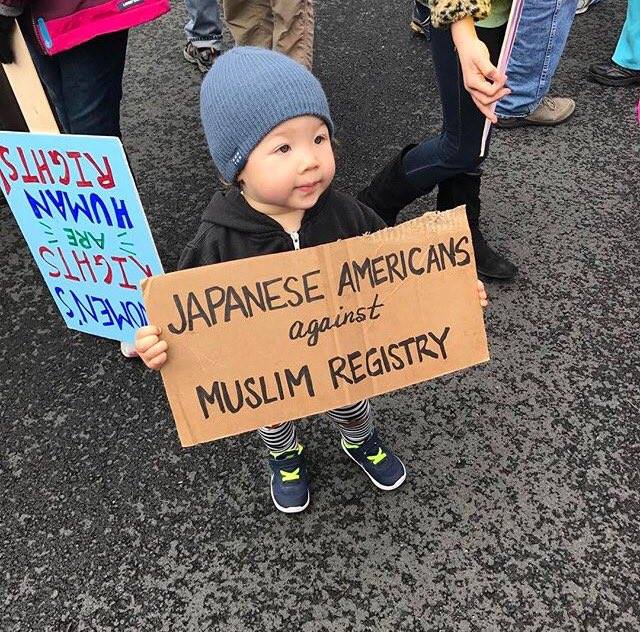
—
By Natasha Varner, Densho Communications and Public Engagement Manager, and Nina Wallace, Densho Communications Coordinator
[Header photo: Protesting the Muslim ban at LAX, photo credit Darren Mooko.]

